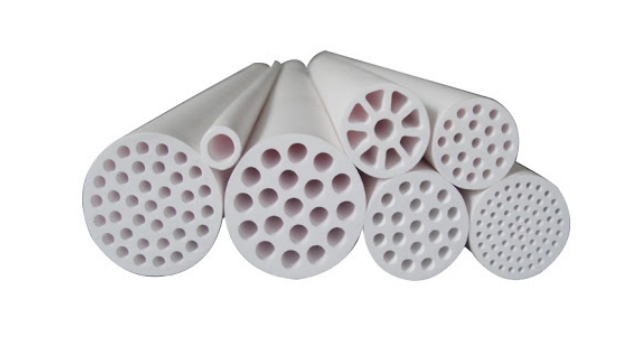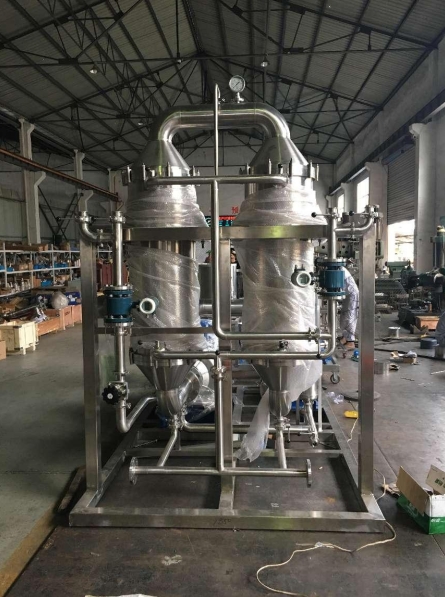https://www.sinotechmachinery.com/products/membrane-filtration-equipment/


1. Equipment principle
Ceramic membrane, also known as inorganic ceramic membrane, is a precision ceramic filter material with a porous structure made of aluminum oxide, titanium oxide, zirconium oxide, etc. sintered at high temperature. Its porous support layer, filter layer and microfiltration membrane layer are asymmetrically distributed. Inorganic ceramic membrane separation technology is a material separation technology based on the screening effect of porous ceramic media. It adopts a dynamic "cross-flow filtration" method that is completely different from traditional "dead-end filtration" and "cake filtration" filtration methods: that is, under pressure drive, the raw material liquid flows at a certain flow rate on the surface of the membrane layer inside the membrane tube. Small molecules (liquids) pass through the microporous membrane in a direction perpendicular to it, and large molecules (or solid particles) are retained by the membrane, so that the fluid can achieve the purpose of separation, concentration and purification.
2. Application Scope
Ceramic membranes have been successfully applied to many fields such as food, beverages, deep processing of plants, biomedicine, microbial fermentation, fine chemicals, etc., and can be used for separation, clarification, purification, concentration, sterilization, desalination, etc. in the process.
1. Biological fermentation industry: Ceramic membranes are widely used in the sterilization, filtration and clarification of various microbial fermentation liquids such as Corynebacterium glutamicum, Saccharomyces cerevisiae, lactic acid bacteria, Bacillus subtilis, Escherichia coli, etc. in common cell factories.
2. Food processing industry: Ceramic membranes are widely used in the sterilization, clarification and filtration of tea extracts, fruit juices, Chinese medicine extracts, oil-containing emulsion wastewater, condiments (soy sauce, vinegar, etc.), wine, draft beer, etc.
3. Application characteristics
1. Ceramic membranes have the advantages of high separation efficiency, good chemical stability, high temperature resistance, and good regeneration performance. The equipment test parameters can generally be linearly enlarged;
2. The general flux of ceramic membrane separation is 30-300L/m2h. The specific flux depends on the material viscosity, concentration and membrane pore size. Generally, the production flux is better than 50L/m2h;
3. Ceramic membranes are prone to concentration polarization, gel polarization, solute adsorption, membrane pore blockage and other phenomena during the filtration process, causing membrane pollution. Certain measures can be taken to prevent and control the degree of membrane pollution, but membrane pollution cannot be completely avoided. Membrane pollution will cause the filtration resistance to increase, resulting in a rapid decrease in membrane flux. During the test, the ceramic membrane must be physically and chemically treated in time to restore the membrane flux.

 English
English français
français Español
Español русский
русский português
português العربية
العربية





